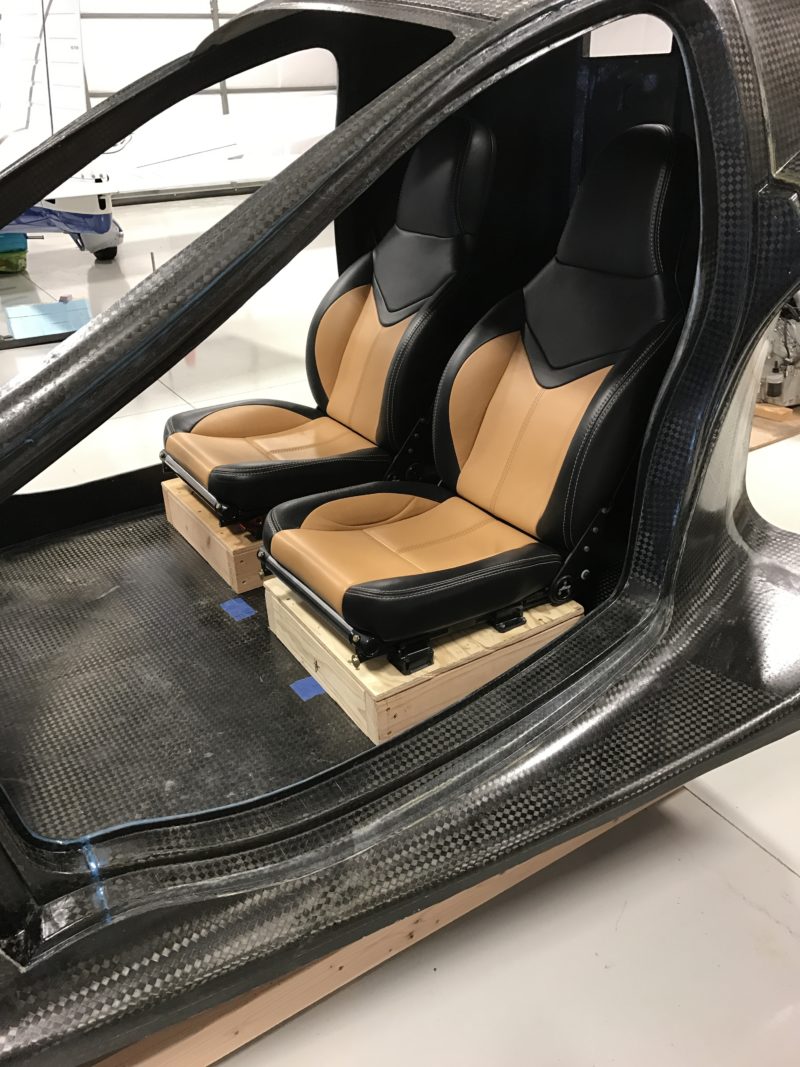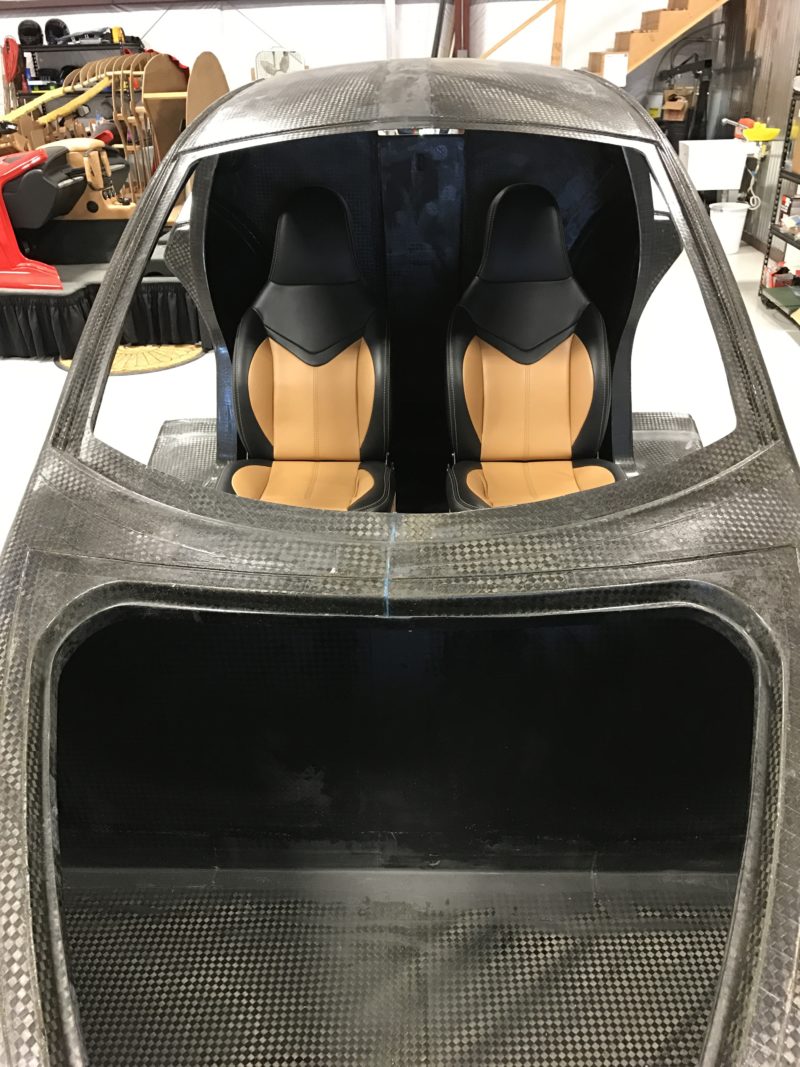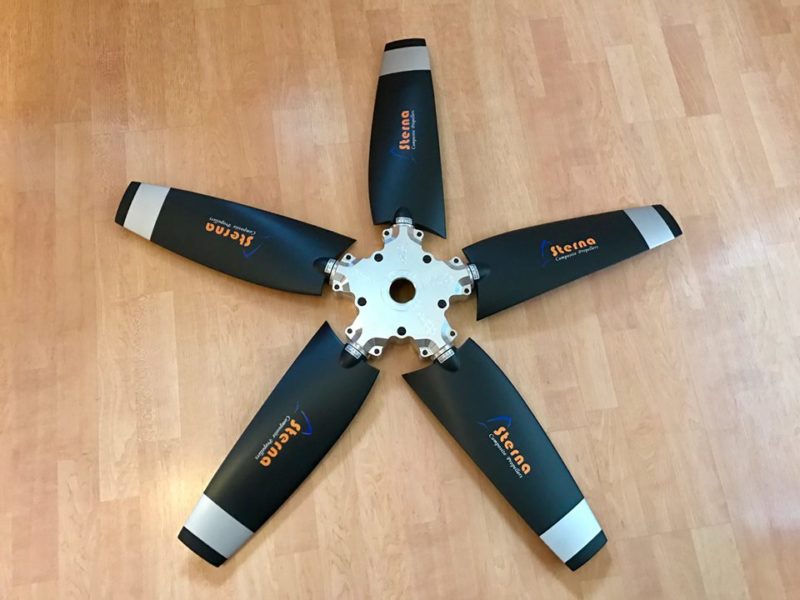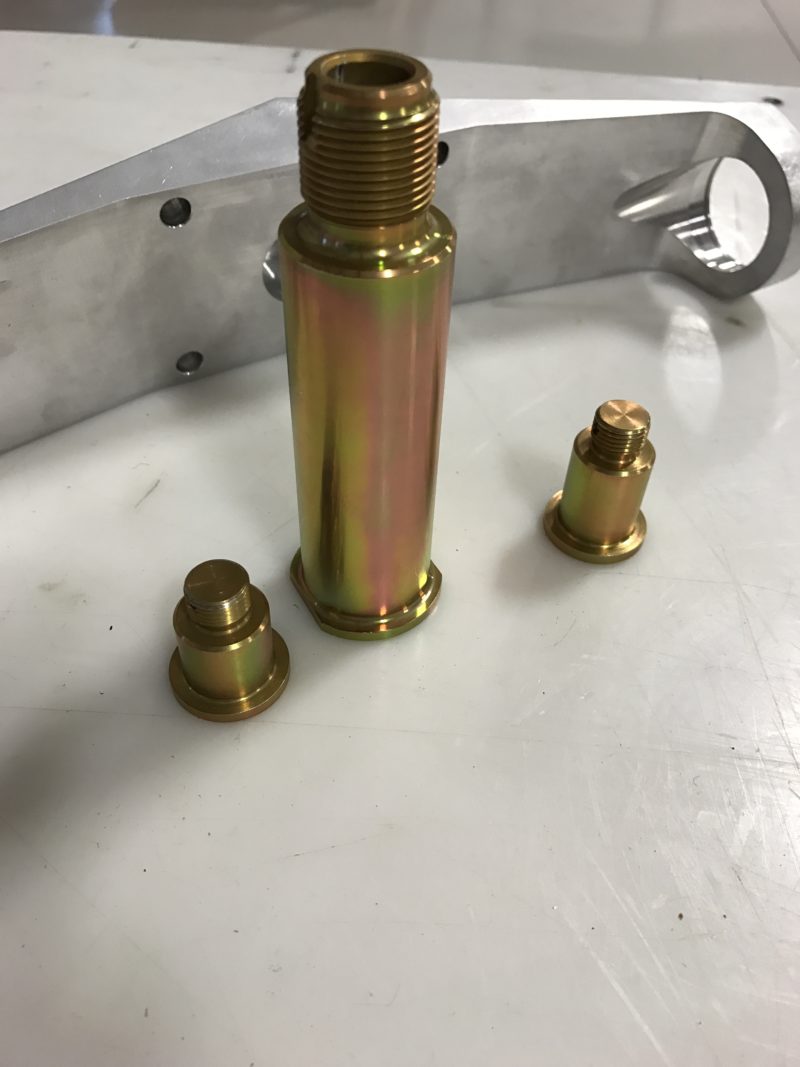We said we would show you how it looks to sit in a Switchblade, and you can see from the smile on Sam Bousfield’s face in the image above, that he is happy with how that seems. Plenty of head room and legroom, plus storage behind the seats. The tape on the floor indicates the location points for the seats so we know where they should be compared to the 3D model and the physical dash mock-up we took to AirVenture last year. Everything was within a quarter of an inch, which is just fine for this! Below is a shot from the nose looking aft, and you can get an idea of the expansive view from the front seats. Remarkable visibility, as commented on by all who have sat in these seats so far.
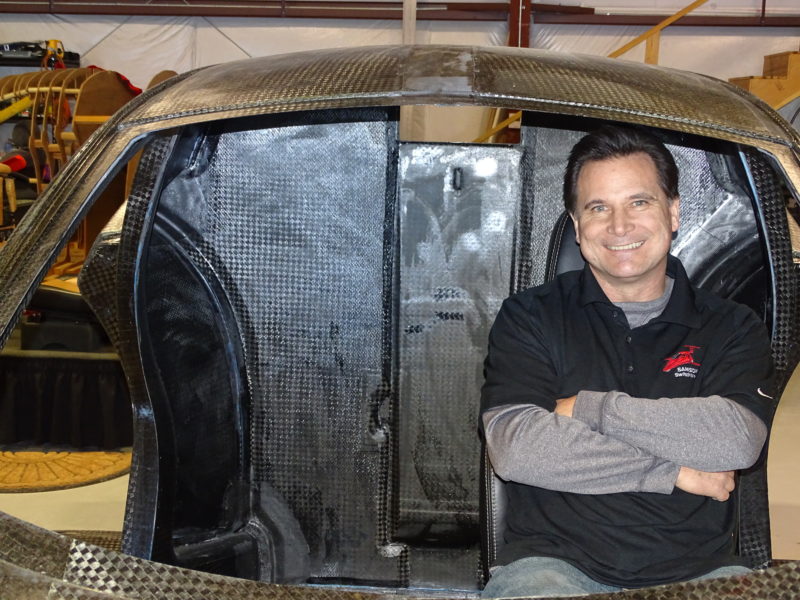
With two people in the seats, there is good room between the passengers, and we are in the process of building a mock-up of the final center console between the seats so we can get an idea of how the arm rest would feel, and access to those all-important cup holders!
The image above shows the front storage compartment, which would be useful only for very light articles. It is also where the windshield wiper and washer fluid tank would be, along with some remotely mounted avionics.
We recently mounted the propellers on the custom hub to check fit, and show them to you, as seen below. These are beautifully crafted blades designed specifically for the duct as part of the design process we went through several years ago. The design of the duct was originally done by DAR Corp of Lawrence, Kansas. The duct was tweaked and a prop design done by Robert Bulaga of Trek Aerospace, who has considerable real-world experience in ducted fan design. The duct and propeller are designed to work together to produce more thrust than a free propeller of same diameter would have up to 200 mph. As that is our top speed, we were excited to work with Robert to gain a design of this caliber. Sterna propellers did a marvelous job at duplicating the design as a carbon over foam propeller, and developed our custom prop hub at the same time. We look forward to ground testing these propellers, and then doing destructive testing to them to simulate rocks hitting the blades at 70 mph in a road use scenario. Not likely it could happen, as the front wheel of the Switchblade is tucked into the center of the vehicle, but there can still be a rock thrown from a passing car, and we should know what damage might be done as a result.
Another thing completed were the pins for the front suspension. The larger pin is actually called the spindle, and it is what the wheel hub rotates around when travelling. This is of toughened and heat treated steel, and the spindle is press fit into the spindle carrier, which is the aluminum piece shown below along with the gold colored pins. The smaller pins shown are for pivot points at top and bottom of the spindle carrier. These pins are held in bearings and allow the spindle carrier to rotate to turn the wheel for steering. All of this allows us to achieve center of wheel steering for the front single wheel. Center of wheel steering is what makes the single wheel feel the same whether in a left or right hand turn. Most cars have the pivot point on the engine side of the wheels, but with one wheel, you would have a hard time controlling the vehicle using that type of spindle location.
We are about to mount the spindle, hub, brakes and rotor on the front wheel, so check soon for that!

